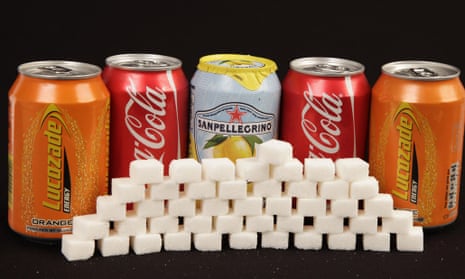Sugar is everywhere – like it or lump it. It’s in drinks, cakes, bread and even the milk you pour over your breakfast cereal. But too much of it can be dangerous, leading to health issues including obesity, tooth decay and diabetes.
The popularity of chocolate and fizzy drinks among young people makes this a particularly pressing issue for schools. To help your class understand what they’re consuming, we’ve compiled a heap of ideas and resources about the sweet stuff.
Primary schools
Does your class know how much sugar is safe? The latest government advice is that children aged between four and six should have no more than 19g of added sugar per day, rising to 24g for those aged seven to 10. Get your students to work in groups to measure the amount of sugar in popular snacks using this lesson plan. They may be surprised by what they find. Students can use this information to create a display of wrappers and packets with sugar cubes beside each to show how sweet they are.
Once children get to grips with how much sugar they can safely consume, it’s time to look at the reasons why. This guide from the British Nutrition Foundation explains how products that contain added sugar can be high in energy (calories) but have few other nutrients. Having these foods or drinks too often can mean consuming more calories than you need, which can cause weight gain and lead to obesity. Students could design a poster or create a cartoon strip to help get this message across.
Excessive sugar also has an impact on teeth. You can explore this with the help of some hard-boiled eggs (with shells on) and a selection of drinks including water, milk, full-sugar cola and fruit juice, as explained in this experiment by the Hamilton Trust. Working in groups, students can predict what will happen to the eggshells (which are similar in structure to enamel of our teeth) if they are left in each of the different liquids for a week. You can watch a video about this experiment below.
You will find more teaching ideas about why a balanced diet is important in this key stage 1 lesson from the British Dental Health Foundation. It uses a cartoon character called Buddy to introduce key words including “acid” and “saliva”. Once students have learned the terms in this glossary, they can use them to explain why sugary foods do not make good snacks. There’s a lesson for key stage 2 as well.
As a homework task, ask your class to keep a week-long diary of their after-school snacks, using the nutrition information on the packaging to record the sugar content of each. Challenge students to reduce their sugar intake the following week by finding healthier alternatives.
Aside from examinng their own diets, another great way for pupils to explore sugar is through whizz-bang science experiments. In this activity, students investigate what happens when several teaspoons of sugar are added to a cup of water. As an extension task, your class can create charts and graphs to show what happens to the dissolving rate of sugar if water is heated up.
Secondary schools
Get older students to explore what happens to sugar when it enters the body with the help of this interactive resource about blood sugar levels, and this resource that explains how diabetes is caused by a failure of the pancreas to produce insulin. From this basis, ask students to explain why a balanced diet is necessary for the body to function well.
Once they’ve considered this, get them to think about how we can end our love affair with sugar. This article from The Day looks at whether sugary drinks and snacks should be taxed in the same way as cigarettes. Get your students to consider the pros and cons of this. If “sugar is the new tobacco” and obesity “is as great a danger as armed conflict”, should high-sugar products be banned, or is freedom of choice more important than health when it comes to what we eat?
In lieu of a tax on fizzy drinks, celebrity chef Jamie Oliver is implementing a levy of 10p on all non-alcoholic soft drinks with added sugar in his restaurants. Students can find out about the campaign by viewing the documentary Jamie’s Sugar Rush. As they watch, ask your class to look out for the number of children who go to hospital every year because of rotten teeth and how much this costs the National Health Service, as well as noting the World Health Organisation’s advice on sugar consumption and the reasons for the introduction of a fizzy drinks tax in Mexico. Further resources are available on the Sugar Rush website, including tips and recipe ideas to help you reduce your sugar intake.
Finally, British Sugar has developed a range of educational resources for secondary students on sugar production and processing. The Beet to Bowl collection includes PowerPoint presentations, worksheets, interactive whiteboard activities, scientific experiments and supporting teacher notes. These quizzes from the Making Sense of Sugar campaign are also handy.
For more ideas see these How to teach articles about healthy eating, positive body image, and cookery.

Comments (…)
Sign in or create your Guardian account to join the discussion